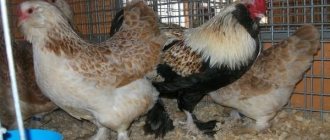People who do not particularly understand cat breeds call such cats Siamese, although, on the other hand, this breed has gained worldwide recognition among felinologists quite recently. In addition, there are some similarities between these breeds, but despite this, Thai cats are an example of how optimal the proportions of animal body parts can be. In fact, this is not the main reason that animals of this breed are very popular.
Along with a harmonious exterior, this cat combines playfulness, as well as nobility, high sophistication, as well as spontaneity, tenderness, affection for humans, and the hunting instinct.
Origin of the breed
The homeland of Thai cats, as the name suggests, is the kingdom of Thailand. The most ancient images of these animals appeared in the 14th century. They are considered the ancestors of modern Siamese, which were called old-type. The distinction between these breeds was achieved through long selective breeding work. Old-type individuals arrived on the European continent in the 19th century, and in the USA at the beginning of the 20th. Breeders received cats that only vaguely resemble their ancestors. Standards for Thai cats were formulated in 1990; Siamese standards received such criteria 30 years earlier.
The legend of the appearance of the Thais
There are several versions of the appearance of the Thai cat breed. One of them says that the Thais have in their roots 11 different breeds of cats that lived in the territory of the state of Siam (modern Thailand) in ancient times. In 1880, the British ambassador brought a Tiger kitten to Europe from his trip to Siam. Soon, Europe and America were overwhelmed with interest in these beautiful and wayward felines.
Tigers appeared in our country in the 18th century. These cats were liked by the elite class and they began to be successfully bred. Proof of their popularity are considered images in paintings painted during this period (photography did not exist then). The Thai breed was brought to Russia in 1960. These individuals looked like Siamese.
Interesting fact! Another name for these cats in pre-revolutionary Russia was Chinese. Society mistakenly believed that China was the birthplace of animals. And in England they were nicknamed Apple heads for their unusual head shape.
Does color affect the character of a pet?
The main representatives of the Siamese color are firmly entrenched in the image of caricatured villains with a vengeful character. Irresponsible breeders, as well as the largest company, Disney, are partly to blame for this.
In the pursuit of profit, two things were ignored for a long time when breeding Siamese: squint and innate aggression. Both were not typical for these cats, so such animals had to be sterilized and neutered. In addition, mating with other breeds was actively practiced, and the behavior of mestizos is always unpredictable.
“ In 1955, 5 years before the Siamese standard was approved, Disney released the full-length cartoon Lady and the Tramp. The main villains there were Si and Ama - two Siamese cats. Thanks to the popularity of the cartoon, their image is firmly embedded in the minds of most viewers.
In fact, Siamese are one of the most loyal and very intelligent mustachioed pets. When properly bred and raised, they grow into docile and gentle companions.
Thanks to numerous experiments, points in kittens ceased to be a rarity and began to appear not only in Siamese, but also in many other purebred “mustaches.” Despite the change in coat color, the character of these animals remained the same.
" IMPORTANT!
Coloring is not able to influence the behavior of the animal. It only changes his appearance, and can also affect his health.
Description of Thai cats
Thai cats have similar features to their direct descendants, the Siamese. They can be distinguished by a number of characteristic features:
- Medium sized body, stocky. Weight varies between three and five kilograms.
- A round head, shaped like an apple with an extended muzzle.
- Slanted eyes, usually blue. The shape is almond shaped.
- The ears are smaller than those of real Siamese. Located on the sides of the head and slightly rounded.
- The muscular neck is of medium length, but can be short.
- The size of the tail is proportional to the body.
- The animal's legs are strong, with rounded paws.
- The coat is short, without undercoat. The fit to the body is less pronounced than in Siamese.
Many inexperienced people confuse Thais with Siamese cats, but their differences can be seen with the naked eye. Thais look rounder and fluffier than Siamese.
Breed standards and defects
The description of the Thai cat includes the standards by which the class of the animal is assessed, and defects of the breed, due to which the individual may not be allowed for exhibitions or breeding.
In kittens up to one year old, it is considered normal for the so-called mask to be unpainted on the face - a rounded mark of a darker coat tone. There may be stripes if the animal is tabby or point. Eyes that are too round and not almond-shaped are penalized. Undesirable appearance features are considered:
- extremely oriental eyes;
- sharp or, conversely, blunt head shape;
- ears are large, small, located low on the head;
- compact tube-shaped body;
- flaccid tail;
- presence of excessive undercoat;
- the presence of pale markings on the body, unless we are talking about agouti color.
You can read about the Burmese cat breed and its colors here.
There are signs by which an animal may be disqualified and not be allowed for further breeding. These signs are:
- pronounced tail defects;
- slanted eyes;
- protuberance on the chest;
- aggression;
- extra toes;
- complete or partial blindness;
- the presence of bone pathologies.
These criteria are a defect for this Thai breed. If there is at least one of these points, the individual cannot be admitted to exhibitions, competitions, and other international events in the field of felinology.
Thai cat color.
Colors of Thai cats
The color of the animal should be contrasting. The lighter the body of the animal and the darker the tail, the better. At birth, the kitten is white, the final color is acquired only at three months and throughout life the pigment only becomes darker. Colors that are regulated by strict international rules:
- Seal point. The color of the animal can range from light brown to light cream. The Thai seal point cat has a tail, paws and muzzle of dark, contrasting colors relative to the overall body color.
- Blue point. It is a bluish-white coat color. There are gray-blue individuals. The eyes of such animals have especially bright eyes.
- Chocolate point. Ivory animal background with chocolate or café au lait markings.
- Lilac point. This is a gray-purple coat color on the paws and tail, the fur coat is the color of magnolia.
- Tabby. Sometimes this color is called tabby point. In this case, there are stripes of a certain color on the animal's body.
- Red point. Individuals with a red or red color.
The contrast to the main color makes the animal’s appearance more expressive, bright and memorable. The animal's color may change over time; young kittens are lighter than their more mature counterparts.
Seal point.
Blue point.
Chocolate point.
Lilac point.
Red point.
Tabby.
Rare options
The following colors are considered rare for the Thai breed:
- Cinnamon Point. There are cinnamon colored markings on the body. Individuals with contrasting warm colors or cool light tones look very impressive.
- Caramel. Warm delicate caramel color. The presence of stripes is considered undesirable, but not a critical drawback.
- Fawn point. Such animals have pastel pink spots on their body, and the body itself is painted light lilac, reminiscent of watercolor.
- Gray-brown point. Very contrasting color type. There are clear brown and gray markings on a white background.
Defects for these colors are dark fur on the belly and lack of point color. The eyes must be strictly blue, even if there are only inclusions on the cornea of a different shade. The most expensive colors are tortoiseshell, regardless of its range.
Cinnamon Point.
Caramel
Fawn point
Gray-brown point
Unrecognized colors
Now felinologists are working in the field of various tabby colors, new colors will be obtained in this direction. Epricot points and silver have already been demonstrated, but so far they have not received their official recognition from international organizations.
Color point color and its features
The English phrase color point is translated as “color spot”. With this color, most of the body remains almost white, and certain areas (legs, tail, ears and muzzle) are covered with dark spots.
“
REFERENCE!
The severity of the transition between light and dark zones determines the value of the animal. The larger it is, the higher the final cost. Residual patterns and spots on the body are considered defective.
The following features are characteristic of color-point colors:
- Temperature dependence. When it gets colder, the amount of dark shade increases.
- Age-related changes in the intensity of points. Newborn color point kittens are completely white or light cream. This is due to the consistently warm temperature in the mother's womb. The first black markings appear within a couple of days after birth, and by 6-10 months the coloring is completely formed.
- Relationship with the color of the iris. It can be strictly blue, and the clarity of the points depends on its brightness.
The darkening of the fur coat under the influence of cold is easy to notice in cold weather. If a cat sleeps on a windowsill, then the part of its body leaning against the window will lose its whiteness.
Thai character
The Thai breed is easy to train; these cats like to bring their owner a ball, slippers and run after them when ordered. Thai pets will happily greet their owner from work and purr happily for a long time. Such cats are considered sociable and are uncomfortable being alone. Thais are considered smart cats. This is expressed in cleanliness, communication skills, and the ability to train. One of the traits of this particular breed is the ability to understand people well. They will immediately determine who is in charge in the family and will count the “leader” among their favorites. It is worth remembering that these felines do not like to sleep all day, they are restless and playful - they are unlikely to be suitable for the company of an elderly person.
These cats are considered talkative and love to chat with their owner and family members. At the same time, the animal has a rich sound range - from purring to loud meowing. All owners note the high degree of curiosity of these animals; all new objects and objects in the apartment will be explored by them. Often for this reason, Thais get injured when they climb into places where their presence is completely undesirable.
Who are Thai cats suitable for?
The Thai breed will be a great find for single people and for large families with children and other animals. The main requirement is to give your pet enough time and attention. This animal will feel bad in a family of workaholics who spend a lot of time at work and not at home. Communication with people is important to them. It will be especially difficult if the owner often goes on business trips and the animal will have to be placed with his friends or relatives for a while. You should not get a cat if there are small animals in the apartment that could become easy prey for the cat.
Gray Thai cat.
Child Compatible
The Thai breed is distinguished by its friendliness, including towards children. You can leave your child with them without fear of bites or scratches. In situations where a child can hurt an animal, it will prefer to avoid the conflict and get into a fight.
Raising a pet
Thanks to their developed intelligence, these cats are trainable and even more amenable to education. To teach a cat simple commands and a tray, you just need to show the cat its place, the animal will quickly understand. As a rule, there are no problems with a cat going to the toilet in places that are not intended for this.
Thai kitten.
Diet of Thai cats
Premium food, balanced in composition, is perfect for this breed. Before purchasing, you should carefully read its composition and refuse to purchase feed that contains iodine. It causes the fur of animals to darken. As natural food you can use:
- boiled vegetables;
- porridges with a high content of meat or offal;
- offal - liver, kidneys, tongue, lungs and other organs;
- fermented milk products with reduced fat content;
- River fish;
- lean meats.
You should not feed your Thai cat sea fish or any seafood. They have a high iodine content. In addition to proper nutrition, it is important to provide the animal with clean water. For pregnant and lactating cats, the portion of food should be increased, and the frequency of feeding should also increase. It is necessary to use special vitamin and mineral supplements.
Sterilization and castration
If a Thai cat does not have breeding value, it is recommended to sterilize it. It is advisable to carry out the operation no earlier than 7-9 months, but before the first mating. It will help prevent the development of serious diseases of the genitourinary system and will avoid the appearance of behavioral problems associated with the instinct of procreation.
Health and diseases of the Thai cat
The history of the Thai breed goes back several centuries. During this time, they developed strong immunity and health. Visits to the veterinarian, with proper care and nutrition, are infrequent. Despite this, the following diseases of Thai cats are more common than in other breeds:
- diabetes;
- malignant tumors of the mammary glands in females;
- lung tumors;
- hydrocephalus.
A cat of this breed has a good chance of living up to 25 years, and even 30. On average, their duration is 10-15 years.
Possible problems
Strong health and immunity does not mean that an animal does not need to be vaccinated. It is also a mistake to think that Thais generally have no problems other than hereditary ones with these animals. Improper nutrition can cause a number of diseases of the liver, digestive system, kidneys, and heart.
Statistics show that individuals of this breed encounter typical diseases with the same frequency as all other cat breeds.
Vaccinations
A Thai cat must have the same vaccinations as all other cats. Mandatory vaccinations are:
- calicivirus;
- rhinotracheitis;
- panleukopenia;
- chlamydia;
- rabies vaccination;
- leukemia virus;
- immunodeficiency;
- bronchopneumonia;
- infectious peritonitis;
- dermatophytosis.
The first vaccination is given at 8-9 weeks, and then repeated every 1-3 years, depending on the disease. Additional vaccinations are determined directly by the doctor himself.
Care and maintenance
Caring for a Thai cat is quite simple, since cats are quite healthy, and their fur does not require special care (just wipe it with a damp hand a couple of times a week). You can feed as standard, choosing one of two feeding options: natural products, limiting the consumption of seafood and liver to the maximum, or dry food and canned food. Therefore, we have compiled a list of the best food for Thais.
Video
How to choose a kitten
When choosing a kitten, you should pay attention to several nuances:
- The acromelanic color type should not have white spots. It is necessary to carefully examine the kitten in the nursery before taking it home.
- The tail should be smooth and free of creases and deformations.
- The kitten should not have strabismus.
At three months of age, the kitten should already have all the necessary vaccinations, as indicated by the marks in its passport. Ears and eyes should be clean, without discharge or souring. The kitten must have good mobility, be playful and active. Weight standards for kittens by age are presented below.
Table of weight norms for Thai kittens by month.
Material on the topic: all about the character and habits of Maine Coons.
How much does a Thai cat cost?
The Thai breed is not rare, therefore, the prices for such kittens are not exorbitant. You can buy a kitten without a metric or pedigree for about 5,000 rubles. The cost of a purebred Thai, with all the necessary documents, ranges from 15 to 20 thousand rubles.
How to name a kitten
You need to choose a nickname for your pet based on its individual differences in character, color, habits, and appearance history. The name should correspond to a specific animal and characterize it as much as possible, but the name should not be too complex, it should be understandable to the people around him. The table below shows popular nicknames for cats and cats.
Names for cats and cats.
Features of raising a Thai kitten
Love of freedom and willfulness do not prevent the breed from being easy to train. Thai kittens require training from the moment they arrive at home. The best time is considered to be up to the first six months of the animal’s life.
Turkish Angora (cat): description of the breed and character
The main feature is the need for constant attention and love. A baby locked in a separate room will eventually withdraw into himself and begin to show aggression towards all family members. Toys alone are not enough for a little “Thai”; you need to play with him regularly. This is the only way a clumsy little one will grow into a smart, friendly, healthy and active animal.
Note! Trying to train cats by splashing them with water or smacking them with newspaper will end badly. With such “stimulation” you need to expect a response in the form of aggression, constant scratches and bites from a pet with an unstable psyche.
Cats easily decipher their owner's mood by the intonation of spoken words. They quickly respond to a friendly or stern tone, but their dignity does not allow them to perceive a shout. With patience, they can be taught a standard set of commands:
- lie;
- sit;
- give me your paw;
- bring;
- it is forbidden.
Training helps pets develop intellectually, but coercion should not be used in it. The characteristics of the Thai breed say: such a cat cannot be re-educated; it is easier to adapt to his personal preferences.
“Thai” kittens require training from the first days, otherwise it will be too late later
Important! Only with complete trust in the person will the cat begin to respond and follow commands. The delicate balance can easily be upset by outright anger or attempts to take it out on the handsome man.
Interesting facts about the breed
There are several interesting facts about Thai cats:
- Such cats are distinguished by their talkativeness and even artistry. They express their mood using intonation. Depending on the situation, they change the timbre and volume of their voice.
- At birth, Thais are white, but with age they develop darkening on their ears, tail, and paws.
- The Thai breed gave rise to the Burmese and Balinese breeds.
The Thai cat will decorate any home and become a true loyal friend for its owners.
Health
Thai cats have strong immunity. Representatives of the breed may exhibit defects such as squint, crease (not correction) of the tip of the tail. But flaws in appearance do not affect health at all.
However, there are a number of diseases that are most common in Thai and Siamese cats:
- bowel cancer;
- baldness;
- dysfunction of the esophagus;
- asthma;
- heart defect (congenital);
- increased pain sensitivity;
- glaucoma;
- breast cancer.
Thais are temperamental in matters of love. When a cat is in heat, she behaves inappropriately and screams loudly. And high hormonal levels are the cause of cancer of the uterus, mammary glands, and inflammation of the ovaries. Sterilization is considered the best disease prevention. Castration reduces the risk of developing urolithiasis.
Vaccinations
Most pets lead a domestic lifestyle, but they also need vaccinations.
Rules:
- 8-12 weeks – first vaccination. A month later, revaccination. Then they are vaccinated every year.
- If the mother cat has been vaccinated, then the kitten is vaccinated at 12 weeks; if not, at 8.
- 10 days before vaccination, the animal is dewormed.
In practice, doctors use complex vaccines against several diseases at once. These are the drugs Novibak, Quadrikat, Multifel, Felovax.
How long do Thai cats live at home?
Thai cats are long-lived. On average they live 14-15 years. However, it is not uncommon for them to live up to 20 or even 28 years. This largely depends on the conditions created, what to feed the pet, and genetic factors.
Advantages and disadvantages
Like any breed, Thais have their own pros and cons. The advantages of these cats include:
- sociability;
- excellent communication skills with people and other animals;
- devotion;
- friendliness and lack of aggression;
- developed mind;
- good manners and ability to train.
But there are several disadvantages. These include an increased sense of revenge - a Thai cat will not tolerate bad treatment at all. These animals can also be called overly stubborn. If a kitten wants something, he will make every effort to achieve it.
Genetics issues
In genetics, everything is very strongly connected. Points in cats appear due to a special pigment - melanin, and this, in turn, due to the enzyme tyrosinase. The chain does not stop there either. At its base is the C gene. It is this gene that determines the final color of the hairs and iris.
The complete absence of pigment, characteristic of white coloring, occurs under the influence of the mutation gene c. Unlike its brother C, the c gene does not activate, but blocks the production of tyrosinase, which prevents color pigmentation and leads to the birth of an albino animal.
In addition to complete albinism, partial albinism is also possible. It is provided by the cs gene, which allows the pigment to penetrate into areas with the lowest temperature. This type of coloration is called acromelanism, or temperature-dependent.
“ INTERESTING!
The cs gene is recessive. It only works if both parents have it. The severity of the points is not important in this case. They may be hidden, but they still appear in at least some kittens.











